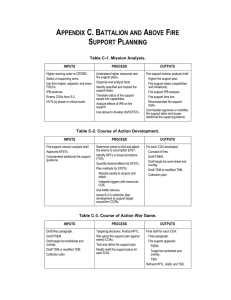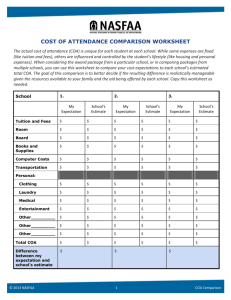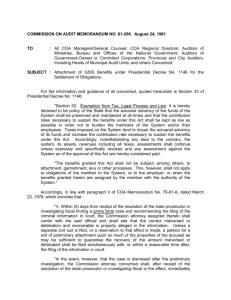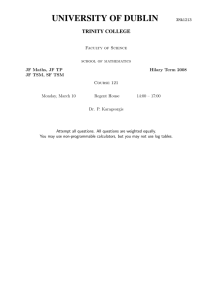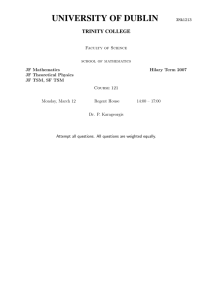A C. B F
advertisement
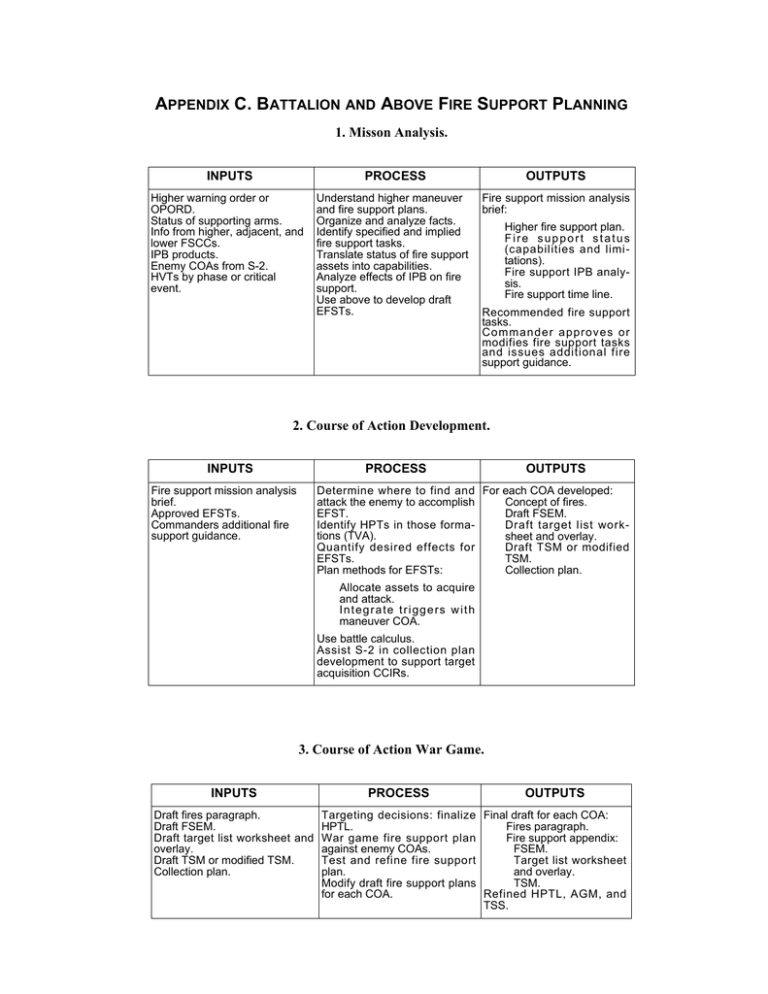
APPENDIX C. BATTALION AND ABOVE FIRE SUPPORT PLANNING 1. Misson Analysis. INPUTS PROCESS OUTPUTS Higher warning order or OPORD. Status of supporting arms. Info from higher, adjacent, and lower FSCCs. IPB products. Enemy COAs from S-2. HVTs by phase or critical event. Understand higher maneuver and fire support plans. Organize and analyze facts. Identify specified and implied fire support tasks. Translate status of fire support assets into capabilities. Analyze effects of IPB on fire support. Use above to develop draft EFSTs. Fire support mission analysis brief: Higher fire support plan. Fire support status (capabilities and limitations). Fire support IPB analysis. Fire support time line. Recommended fire support tasks. Commander approves or modifies fire support tasks and issues additional fire support guidance. 2. Course of Action Development. INPUTS PROCESS Fire support mission analysis brief. Approved EFSTs. Commanders additional fire support guidance. OUTPUTS Determine where to find and For each COA developed: attack the enemy to accomplish Concept of fires. EFST. Draft FSEM. Identify HPTs in those formaDraft target list worktions (TVA). sheet and overlay. Quantify desired effects for Draft TSM or modified EFSTs. TSM. Plan methods for EFSTs: Collection plan. Allocate assets to acquire and attack. Integrate triggers with maneuver COA. Use battle calculus. Assist S-2 in collection plan development to support target acquisition CCIRs. 3. Course of Action War Game. INPUTS Draft fires paragraph. Draft FSEM. Draft target list worksheet and overlay. Draft TSM or modified TSM. Collection plan. PROCESS OUTPUTS Targeting decisions: finalize Final draft for each COA: HPTL. Fires paragraph. War game fire support plan Fire support appendix: against enemy COAs. FSEM. Test and refine fire support Target list worksheet plan. and overlay. Modify draft fire support plans TSM. for each COA. Refined HPTL, AGM, and TSS. C-2 ________________________________________________________________________________________________ MCWP 3-16 4. Course of Action Comparison and Decision. INPUTS PROCESS Final drafts for each COA of: Understand higher maneuver and fire support plans. Fires paragraph Organize and analyze Fire support appendix: FSEM. facts. Target list worksheet and I d e n t i f y s p e c i f i e d a n d overlay. implied fire support tasks. TSM or modified TSM. Translate status of fire supR e f i n e d H P T L , A G M , a n d port assets into capabiliTSS. ties. Analyze effects of IPB on fire support. Use above to develop draft EFSTs. OUTPUTS Commander-approved COA. FSC identifies refinements to templates and tools for selected COA. Fire support warning order. 5. Orders Development. INPUTS Commander’s selected COA. Identified refinements to fire support templates and tools for the selected COA. PROCESS OUTPUTS Refine any changes to COA Final fire support plan: made during the decision Fires paragraph. process. Fire support appendix: Finalize and reproduce written products. FSEM. Prepare orders brief. Target list worksheet and overlay. Target synchronization matrix. HPTL, AGM, and TSS. 6. Transition. INPUTS OPORD. PROCESS Disseminate order. OUTPUTS Rehearsals. Backbrief.
